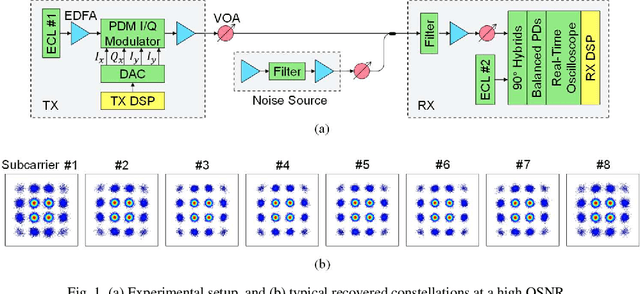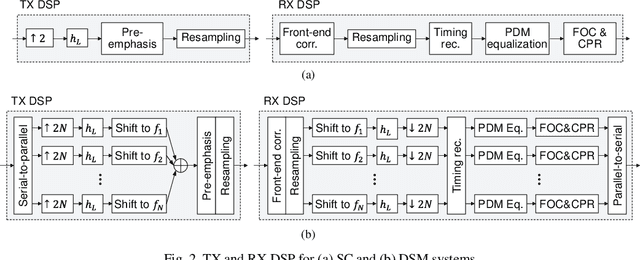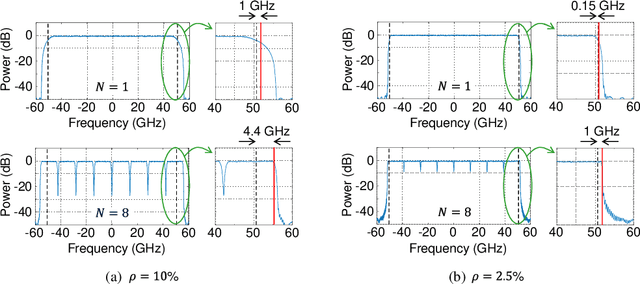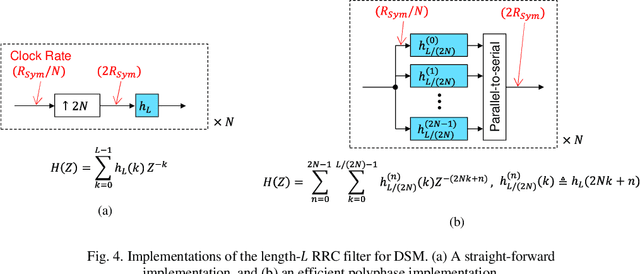On Digital Subcarrier Multiplexing under A Bandwidth Limitation and ASE Noise
Paper and Code
Feb 25, 2022



We show that digital subcarrier multiplexing (DSM) systems require much greater complexity for Nyquist pulse shaping than single-carrier (SC) systems, and it is a misconception that both systems use the same bandwidth when using the same pulse shaping. Through back-to-back (B2B) experiments with realistic transmitter (TX) modules and amplified spontaneous emission (ASE) noise loading, we show that even with optimized waterfilling and entropy loading, DSM does not achieve a larger net data rate (NDR) compared to SC when only ASE noise exists in the channel in long-haul transmission scenarios.
 Add to Chrome
Add to Chrome Add to Firefox
Add to Firefox Add to Edge
Add to Edge